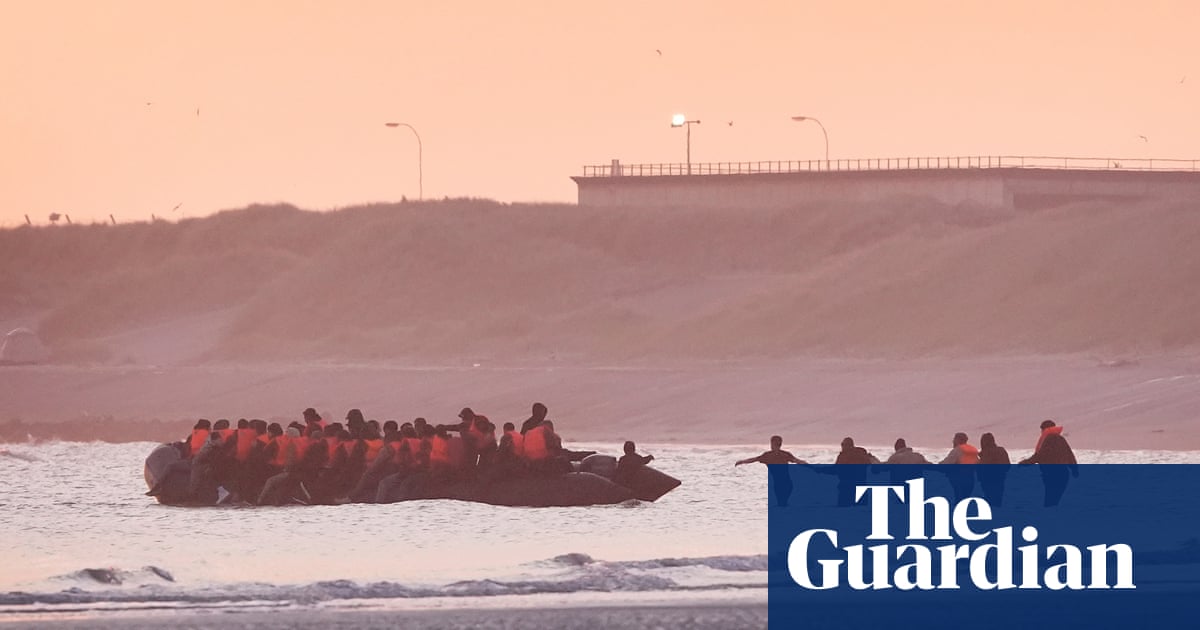The record numbers of people arriving in the UK via small boats can be attributed to favourable weather and greater numbers being crammed into vessels,Home Officeanalysis has claimed.
Figures show there were twice as many “red days” – when there are calmer conditions in the Channel, meaning crossings are more likely – in the first four months of this year as there were in the same period in 2024.
In the year ending April 2025, 47% of boats crossing the Channel had 60 or more people onboard, compared with 2% in the year to April 2022.
The Migration Observatory at Oxford University challenged the Home Office analysis, saying there was no evidence that weather was a major factor in long-term increases in boat arrivals.
Charities said the analysis ignored the fact that most people attempting to come to the UK were found to be legitimate asylum seekers driven by war, famine and climate change.
The analysis has been released as Keir Starmer attempts to fight off a growing challenge from Nigel Farage’s Reform UK. Labour party officials are convinced that rising irregular immigration numbers will be a key issue in future elections.
On Saturday, more than 1,100 migrants and refugees arrived in the UK, bringing the annual total to 14,812, up 42% on this time last year.
According to the figures released on Tuesday, there were 60 red days in the first four months of 2025, compared with 27 over the same period in 2024 and 23 in the first part of 2023.
There were 93.5% more red days during the first 10 months of Starmer’s government than in the same period a year earlier. In that time, there was a 34.5% increase in the number of arrivals, from 25,571 between July 2023 to April 2024, to 34,401 in the 10 months to April 2025.
The number of people travelling in each dinghy has increased, the figures show. In April 2023, there was only, one boat carrying more than 80 people. In April this year, there were 33 boats carrying 80 or more people.
Assessments of the likelihood of Channel crossings are prepared for the Home Office by the Met Office. The assessments are colour-coded red, amber or green according to likelihood of activity based on environmental and other factors, including wave height, surf conditions on beaches, wind speed and direction, the chance of rain, and recent trends in conditions.
Peter Walsh, a senior researcher at the Migration Observatory, said: “There’s no evidence to suggest that the weather is a major factor explaining long-term increases in small boat arrivals such as the one we’ve seen over the past eight months.
“It seems unlikely that the weather is much more than a short-term constraint on small boat crossings. Other factors, such as the number of people wanting to reach the UK and the number and professionalisation of smuggling gangs, are likely to be more important.”
Enver Solomon, the chief executive of the Refugee Council, said: “It’s obviously correct to acknowledge that there are more crossings when there are good weather days, but it is also important to recognise that enforcement measures alone are so far not achieving the intended outcome.
“Many men, women and children taking these journeys are fleeing countries like Sudan, where war is forcing them from their homes. People do not risk their lives on a flimsy boat in the Channel unless they are running from horrors more frightening than they face in the sea.”
A Home Office spokesperson said: “This government is restoring grip to the broken asylum system it inherited that saw a whole criminal smuggling enterprise allowed to develop, where gangs have been able to exploit periods of good weather to increase the rate of crossings for too long.”
